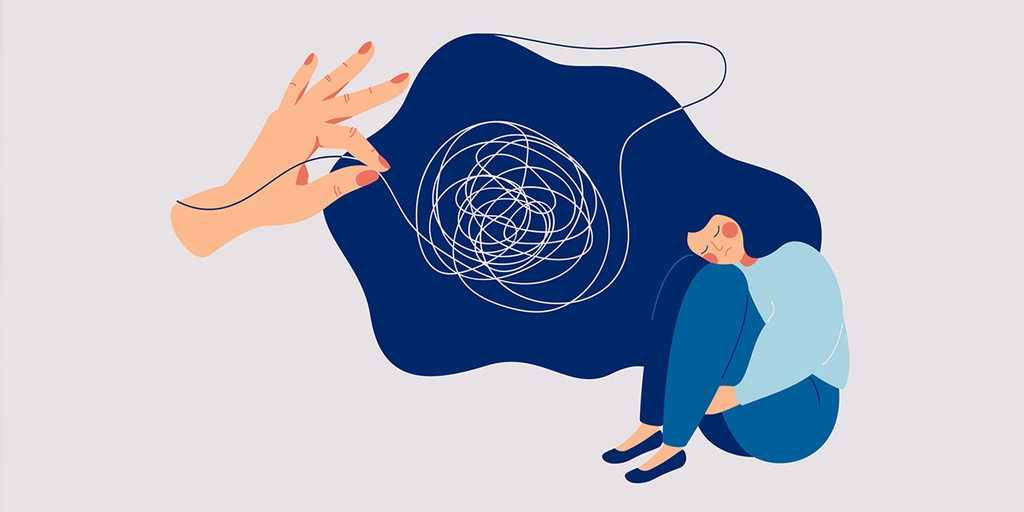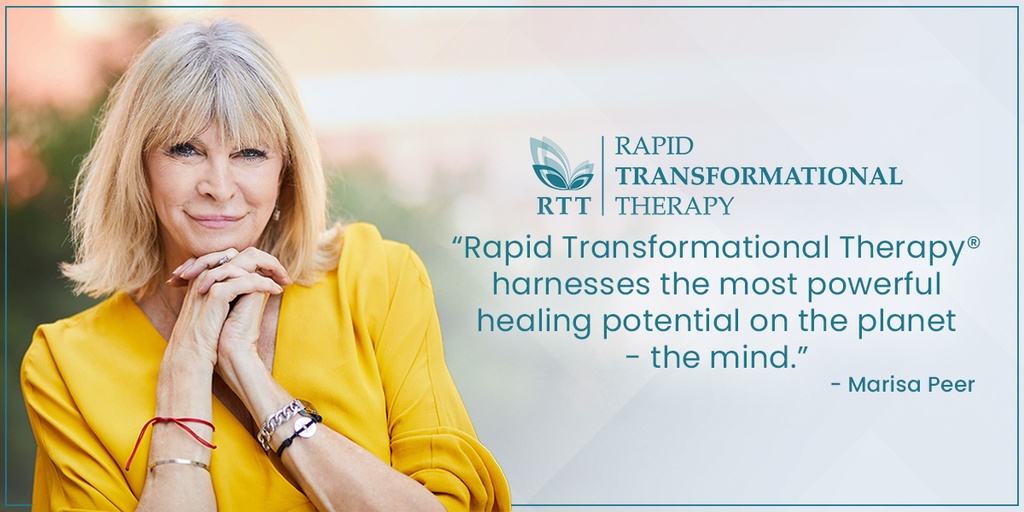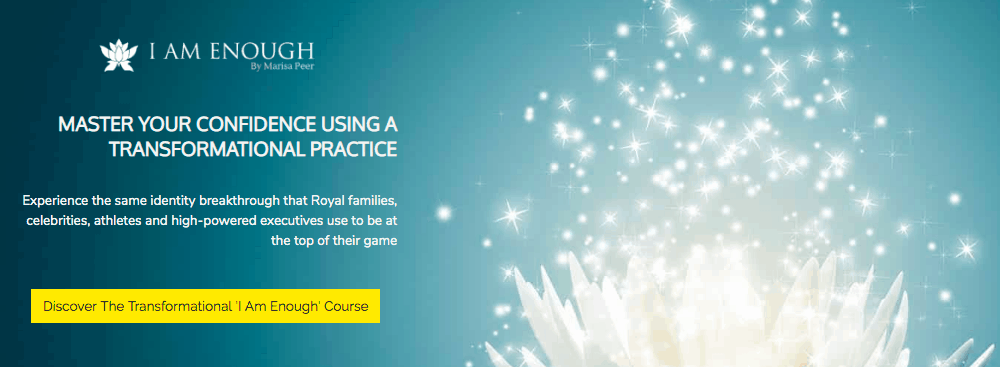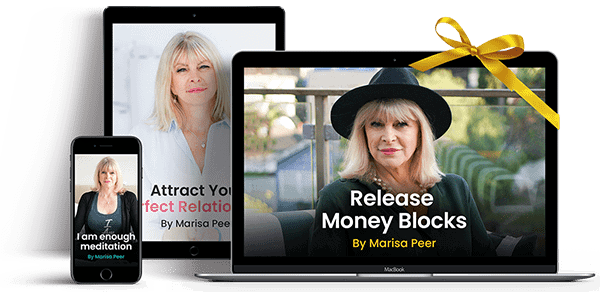Our limiting beliefs are one of the biggest mental blocks holding us back.
Many of us dream big, but there is always an inner voice telling us we are not good enough or that we are not deserving of it.
If you have ever had these doubts, they are known as limiting beliefs—and they prevent us from living happy, fulfilling lives.
To achieve personal success and happiness, you must first break these limiting beliefs.
Once you clear them from your mind, you automatically develop the courage and confidence to pursue your dreams and live an uncompromised life.
Breaking limiting beliefs is not easy. However, there are simple yet effective methods to identify your limiting beliefs and get over them.
In this article, you will learn:
- What limiting beliefs are
- Where limiting beliefs come from
- How to identify your limiting beliefs
- How to dismantle them and replace them with empowering ones
What Are Limiting Beliefs?

Have you ever thought that you cannot lose weight because of your genetics?
Or maybe you believe that you have so much debt that you will never be able to repay it—so you decide to spend your money on other things instead.
If you have ever had thoughts along the lines of “I can never do A because of B,” you most likely suffer from a limiting belief.
Simply put, a limiting belief is a state of mind, a conviction, or anything you perceive as real—but which also limits your life.
It is a generalization of yourself and how the world works—even if there is little or no evidence to support it.
Limiting beliefs make you:
- Focus on the negative parts of your life
- Blind to positive opportunities you come across
- Crippled by low self-confidence and self-worth
- Hold back from making positive choices
The worst part is that most of these beliefs operate from our subconscious—many of us do not even realize we have them.
To understand why this happens, it is essential to know where limiting beliefs come from—and why they are so powerful.
Where Do Limiting Beliefs Come From?

Your childhood
From the time we were born until the age of five, our brains develop faster than any other period of our life.
During this period of rapid brain development, children are constantly absorbing information. Some of this information becomes a limiting belief.
As children, we simply accept something as true because our brains are still developing, and we do not have a complete understanding of how the world works yet.
For example, if your parents were always yelling at each other, your subconscious would think that getting angry and raising your voice was the natural way of resolving conflict.
Or if your parents were always saying things like “we are poor,” you might suffer from a lower sense of self-worth. You may even begin to associate someone’s value by how much money they make.
These beliefs stay with you into adulthood, preventing you from developing healthy relationships with yourself and other people.
Your past experiences and traumas
Another source of limiting beliefs come from our own experiences and personal traumas.
Here is an example: Have you ever found it difficult to trust someone new after being hurt by an ex-partner or spouse?
If you answered yes, then you have experienced a limiting belief which stems from personal trauma.
If left unchecked, that belief can stop you from developing deep and meaningful relationships with future partners.
Post-traumatic stress disorder (PTSD) is an extreme form of trauma—it has been linked with higher activity in areas of the brain that processes fear, and less activation in your prefrontal cortex (the area of the brain that acts towards your goals).
In other words, a traumatic experience makes it easier for your brain to develop a limiting belief based on emotion rather than facts.
Your culture and community
We are all influenced in some way by our culture and community. Things like religion, family, and education affect our values and the way we see the world.
However, some of these values can sometimes directly oppose your own—and limit you from living an authentic life.
An example of this would be if someone told you that being a lawyer is more successful than being a musician, and you decided not to pursue a career in music.
It is natural to have a set of values derived from your culture and community. However, if these values stop you from living authentically, then it becomes a limiting belief.
As you can see, limiting beliefs comes from the places most personal to us, which is why they are powerful.
The good news is that you can get over limiting beliefs and empower yourself. To do that, you must first identify what your limiting beliefs are.
How Can I Identify My Limiting Beliefs?

The simplest way of identifying your limiting beliefs is to do an honest assessment of yourself.
Clear your distractions, grab a pen and paper, and answer the following questions:
- What are the areas of my life that I am afraid or anxious to take action on?
- What are the areas I wished were different, and need improvement?
- Where do I want to be in each of those areas of my life? What is keeping me from being there?
These questions will help you see areas in your life that are important to you but have remained stagnant.
You will learn that your limiting beliefs are the perceived reasons you have not been able to work on them.
For example, let’s say you have been talking about starting a business for years, but still have not taken the first step.
The reasons holding you back could be a perceived lack of time, lack of money, thinking you do not have what it takes to run a business, etc.
However, these excuses are just limiting beliefs with no real basis. Once you break these beliefs, you remove the mental blocks which stop you from working on your goals.
You will begin to see that you are actually capable and have the power to create many opportunities for yourself.
Answering the questions above will help you develop a higher awareness of your limiting beliefs.
Additionally, carry a journal with you throughout your day. Make a note whenever you notice a negative belief about yourself.
Once this becomes a habit, you will notice just how many limiting beliefs you have and how much they hold you back.
Here are some of the most common limiting beliefs
- I don’t have enough time
- I’m too old
- I’m not qualified enough
- I can’t change
- I’m not good enough
- I don’t deserve this
When analyzing your thoughts, look out for these phrases—they are strong indicators of a limiting belief.
Notice a pattern? Limiting beliefs begin with the assumption that something about you is static and unchangeable.
However, neuroscience proves otherwise; that the brain is highly flexible and able to change throughout its life because of its neuroplasticity.
In other words, it is always possible for you to change dysfunctional thoughts and behaviors and replace them with empowering or even millionaire mindsets, skills, and abilities.
Now that you have identified your limiting beliefs, you can start dismantling them.
How Do You Clear Limiting Beliefs?

There are two ways of clearing your limiting beliefs; the first is by doing it on your own using the methods described below.
This method will take time—but with discipline, consistency, and practice, you will be able to dismantle your limiting beliefs and achieve your dream life.
The other, more rapid method is by speaking to a professional therapist who can dive deep into your subconscious and completely reprogram your mind.
These powerful tools and techniques in therapy can help remove your mental blocks and identify deeply-ingrained limiting beliefs—in just a single session.
We will explain both methods so you understand which works best for you.
3 steps to clearing limiting beliefs on your own
Have you spent years with a limiting belief, merely telling yourself the opposite will not work?
It is not easy to let go of entrenched beliefs you have had for years, so be patient—the results will not come overnight.
However, if you are consistent and keep an open mind, these steps will help dismantle your limiting beliefs and allow you to adopt empowering ones instead.
Step 1: Look for evidence that challenges these beliefs
Sit down and question your limiting beliefs—are you actually bad at business? Or are you just afraid of trying something and failing?
Look for evidence that contradicts them. Chances are, you will find plenty of people who have been in a similar position as yourself, but still somehow managed to achieve the same goal.
For example, do you think you are too old to become an athlete?
Meet the woman who did not start training to become a triathlete until her late 50s (she is 73 and still competing this year).
You do not even have to look very far; you can follow examples of people around you that you know and who inspire you.
Or take an example from your own life, from a time when you exceeded your own expectations.
Rather than attribute your previous success to luck, take it as a sign that you are more capable than you give yourself credit for.
The point of this exercise is simply to doubt your limiting beliefs. Once you start questioning them, you create the opportunity for self-transformation.
Step 2: Experiment with your behavior
However, merely looking for counter-evidence is not enough—you must also behave in direct contradiction with your limiting beliefs.
For example, if you believe that you cannot manage your time, ask yourself, “How would I act if I was the best time-manager in the world?”
Then act accordingly.
Another example would be if you wanted to be more socially savvy, a simple challenge like making yourself attend one social event a week could help dismantle your limiting belief.
Additionally, you may find that simply being more outgoing would help train your social skills and lead to more social success.
Of course, this does not mean you need to act inauthentically; the idea is to merely explore different types of behavior that might bring out other sides of your personality.
Acting in direct contradiction with your limiting belief will weaken it and make it easier to break.
Step 3: Reinforce positive beliefs

Based on the evidence, it is clear that your mind is the most powerful and influential factor affecting your behavior.
Your mind is constantly listening to your self-talk, and what you repeat to yourself subconsciously translates into your actions and behavior.
For example, when you say things like, “This commute is killing me. This traffic is a nightmare. My boss is stressing me out. I am dying under the pressure,” your mind believes you.
It gives cues to your body and brain, which respond by elevating your heart rate, increasing your cortisol levels, and flushing your system with stress hormones that make you angry and upset.
More importantly, your self-talk reinforces limiting beliefs you have about yourself.
For example, by saying, “This commute is killing me,” you empower the belief that life is overwhelming for you, and you are unable to cope.
Our mind continually uses the language it hears us using to inform how it should feel.
This is why Marisa Peer, leading therapist, motivational speaker, and best-selling author, believes the secret to changing your behavior is by changing the words you say to yourself.
“You cannot fight your wiring, but when you understand how and why your mind operates, you can then work with it instead of against it, to learn how to control your thoughts and get all the changes you want.” – Marisa Peer
By replacing negative self-talk such as, “My job is hell, my kids are badly behaved,” to a more neutral version of events, “My job is demanding at times, and my kids can be a challenge, but I have phenomenal coping skills,” you immediately create a more empowering outlook for yourself.
These positive affirmations are a powerful tool in dismantling limiting beliefs.
Take an empowering belief and constantly repeat it to yourself. You can write it down on a piece of paper and carry it with you, or set it as a daily reminder on your phone.
Some people prefer writing these in a journal, or even repeating them as a mantra during their meditation.
Choose whichever method is preferable to you, but it is essential to make it a daily habit—affirmations only work through repetition.
Also, make sure you choose an affirmation that resonates with you. Repeating something that you have no confidence in could backfire and make you feel worse.
For example, saying, “I am a lovable person” when you do not believe you are, could further lower your self-esteem and feelings of self-worth.
Instead, pick an affirmation that reinforces what is important to you and something that you can achieve on your own.
Going back to the example above, instead of saying, “I am a lovable person,” you could say, “I choose to be kind to myself today.”
As opposed to relying on external validation, this affirmation reinforces an act that is entirely within your control and helps cultivate emotional independence and self-love.
How to Release Your Limiting Beliefs from the Root?

Although it is possible to clear limiting beliefs by yourself, it is a time-consuming process.
A more efficient method to clear your limiting beliefs is by directly addressing the root cause and working directly with the subconscious mind.
Conscious vs. subconscious mind
Your conscious mind is the part of your brain that is fully aware and related to controllable actions.
For example, if you had a sudden craving for ice cream and decided to go out to get it, this is your conscious mind at work.
However, what you may not realize is that your subconscious mind also played a role in that decision.
Your subconscious drives your motivations and actions through emotions such as love, fear, and inspiration. These are not immediately apparent to you and may seem to guide your actions ‘instinctively.’
Going back to the example above, why did you crave ice cream in the first place?
Perhaps you were stressed, and your subconscious drove you to get ice cream, which was a source of happiness and pleasure for you as a child.
This is purely your subconscious mind moving you away from pain and towards pleasure, which is what it is hardwired to do.
Your subconscious loves what is familiar and avoids anything uncomfortable or unfamiliar.
While this may sound logical, the problem arises when your subconscious acts under a limiting belief and becomes an act of self-sabotage.
Going back to the example above, let’s say your goal is to lose weight; however, you also have a limiting belief that losing weight is too difficult, and the thought of going to the gym or eating a balanced diet is highly unpleasant.
Your subconscious perceives this stress and drives you to get ice cream instead, which now becomes an act of self-sabotage.
Without first addressing your subconscious mind, it is easy for you to get stuck in a loop of self-sabotage and remain stagnant.
That is why a therapy program that goes directly to your subconscious and addresses the root of your limiting beliefs can produce results faster and more effectively.
Let go of limiting beliefs with the I Am Enough Program

Celebrity therapist Marisa Peer, pioneer of, Rapid Transformational Therapy (RTT) (a revolutionary technique of reprogramming the subconscious mind, based on the most beneficial principles of hypnotherapy, psychotherapy, Neuro-Linguistic Programming, Cognitive Behavioral Therapy and neuroscience) has developed the I Am Enough program, for all those looking to break free of their limiting beliefs.
If you have ever been lost in thought, missed an exit on the highway, or in the zone during a workout—then you have been in a state of focused awareness and concentration similar to that of hypnosis.
Hypnosis is used to access this trance-like state to move beyond your conscious “thinking” mind, and into the subconscious.
Your subconscious controls most of your habitual thought and behavioral patterns. That is why removing limiting beliefs by yourself might be challenging—many people make changes only in their conscious mind.
They may consciously act against their limiting beliefs, but once they let up their guard, their subconscious takes over—and the self-sabotaging happens instinctively without them realizing it.
However, by directly removing a limiting belief and dysfunctional habits from your subconscious and installing new empowering beliefs, you can make permanent and positive changes.
The I Am Enough Program
The I Am Enough program is an in-depth course developed by Marisa Peer, to help you uncover your blocks, break them down, and emerge on the other side with the tools and knowledge you need to create a happy and positive existence, free from limiting beliefs and fuelled by high self-confidence and self-esteem. Interested? Click the banner below to access the program

The I Am Enough Masterclass
Want a taste of the I Am Enough program before committing to the intensive course to change your life? You can watch the I Am Enough masterclass, led by Marisa Peer herself – a 90 minute journey through deconstructing limiting beliefs, that also provides you with actionable steps you can take today to get your journey towards an abundant and free life, started. To gain access to the Masterclass, just click the banner below and sign-up now!





